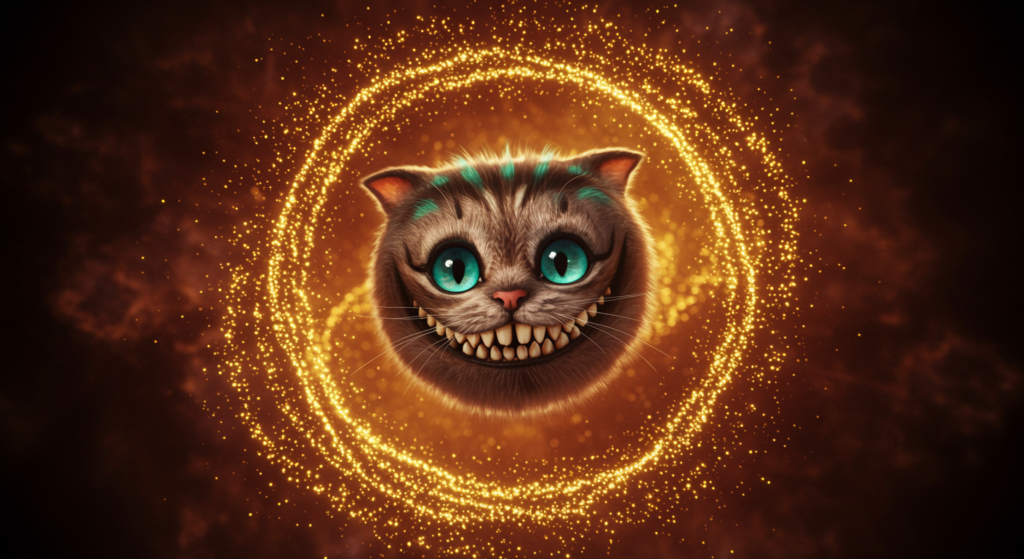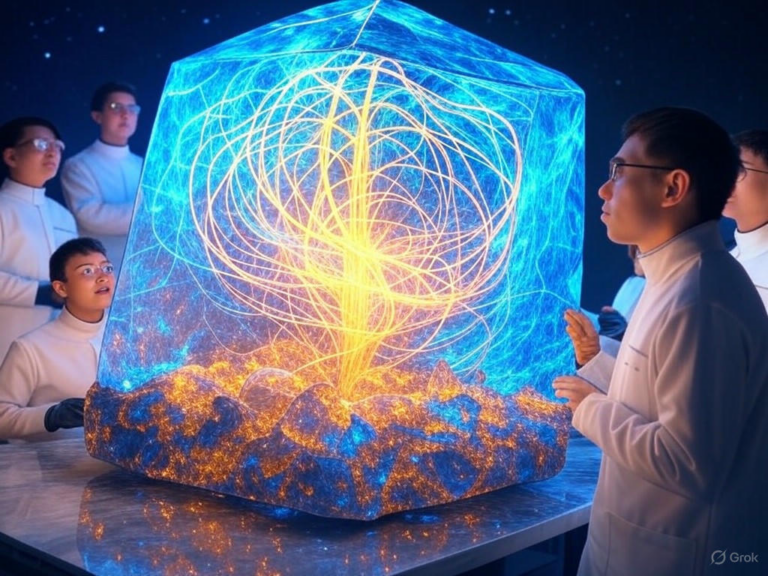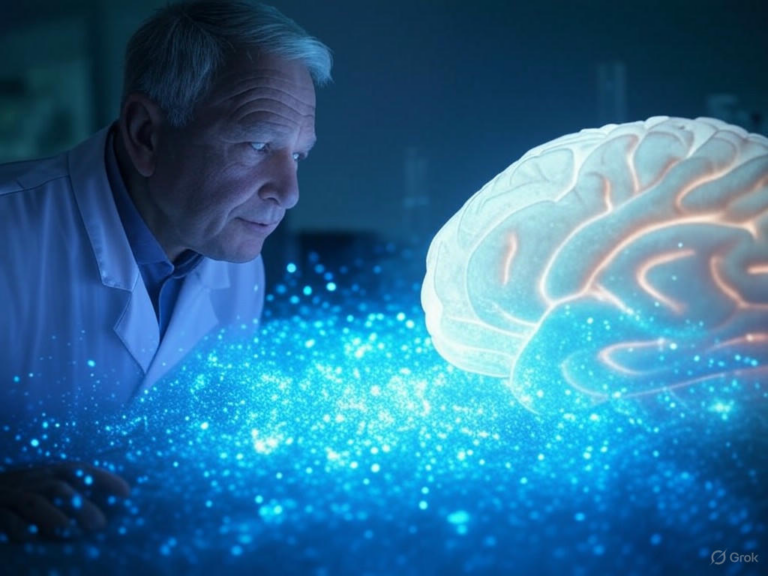
Quantum Cheshire Cats: Exploring the Quantum Mystery
Introduction to the Quantum Cheshire Cat
The Quantum Cheshire Cat is one of those jaw-dropping ideas from quantum mechanics that makes you pause and rethink reality. Picture this: just like the mischievous cat in Lewis Carroll’s Alice in Wonderland that fades away leaving only its grin, a quantum particle might seem to detach from its own properties, such as spin or polarization. This phenomenon has not only captured the imagination of physicists but has also sparked ongoing debates about the quirky rules of the quantum world. Have you ever wondered if a particle could wander off without its essential traits?
First proposed in 2013, the Quantum Cheshire Cat effect challenges our everyday understanding by suggesting that properties can take a different path from the particle itself. It’s not magic—it’s science at its most puzzling—but it raises questions about measurement and reality that keep researchers up at night. Let’s unpack this step by step.
The Origins of the Quantum Cheshire Cat Effect
The story of the Quantum Cheshire Cat began with a 2013 theoretical paper by Yakir Aharonov and his team, who imagined particles splitting from their properties in clever experiments with photons. Fast forward, and scientists were sending these particles through devices like interferometers, where the particle appeared in one path while its property showed up elsewhere. Imagine trying to follow a shadow that detaches from its owner—it’s that surreal.
This wasn’t just theory; real experiments followed. In 2014, Tobias Denkmayr’s group worked with neutrons and claimed to see the separation happen. Suddenly, the literary analogy of a “grin without a cat” became a scientific headline, blending whimsy with quantum precision. If you’re into paradoxes, the Quantum Cheshire Cat is a prime example of how quantum mechanics loves to flip our expectations.
Key Experiments and Observations in Quantum Cheshire Cat Scenarios
- The 2013 photon experiments laid the groundwork, showing how interference could make it look like properties were detached.
- Denkmayr’s neutron study a year later added weight, prompting widespread discussion in physics circles.
- These observations have inspired further tests, emphasizing how the Quantum Cheshire Cat effect might reveal deeper truths about quantum behavior.
What if we could use this in everyday tech? For instance, in quantum computing, separating properties might lead to more secure data transmission—something worth exploring.
The Science Behind the Quantum Cheshire Cat Paradox
At its core, the Quantum Cheshire Cat revolves around quantum interference and contextuality, two pillars that make quantum mechanics so fascinating. These concepts explain why particles don’t always follow the straightforward paths we expect in the classical world.
Quantum interference is like waves overlapping on a pond, where a single particle’s wavefunction spreads out and interacts with itself. This can create patterns that make it seem like the particle’s properties are elsewhere, adding to the mystery of the Quantum Cheshire Cat.
Exploring Quantum Interference in the Quantum Cheshire Cat
Quantum interference happens when a particle, say a photon, exists in multiple states at once, its wave-like nature causing it to interfere with itself. In Quantum Cheshire Cat setups, this interference might give the illusion of separation, but it’s all about how we interpret the waves. Think of it as a symphony where notes blend unexpectedly—sometimes you hear an echo that seems detached.
For example, if you’re experimenting at home with simple optics, you might see light waves interfere and create spots where properties appear misplaced. This isn’t just abstract; it could hint at advancements in quantum sensors.
Contextuality in Quantum Cheshire Cat Measurements
Contextuality adds another layer, showing that measurement outcomes depend on the setup. In Quantum Cheshire Cat experiments, changing how you measure a particle’s position versus its property can alter results entirely. It’s like asking a question in two different ways and getting answers that seem contradictory.
This means the effect isn’t about properties literally vanishing; it’s about the context of observation. Scientists like Holger Hofmann have pointed out that our methods shape what we see, making the Quantum Cheshire Cat a lesson in careful experimentation.
Debunking or Demystifying the Quantum Cheshire Cat Effect?
While the Quantum Cheshire Cat sounds like something out of science fiction, recent studies suggest it’s not as otherworldly as it first appears. Research in the New Journal of Physics explains it through standard quantum rules, like interference and contextuality, without needing to imagine properties floating off on their own.
As Professor Holger Hofmann notes, “The original interpretation only comes about if you combine measurements in a specific way, ignoring the setup’s influence.” So, is it debunked or just demystified? Either way, it’s a reminder that quantum mechanics is full of surprises.
Alternative Explanations for the Quantum Cheshire Cat
- Many experts argue that what we see is pure quantum interference, not a real split.
- Measurement context plays a huge role, varying outcomes based on how tests are run.
- There’s no solid evidence that properties like spin can exist independently, keeping the Quantum Cheshire Cat grounded in theory.
If you’re curious, try visualizing a coin flip where the result changes based on when you look—it’s a simple analogy for this quantum quirk.
Quantum Cheshire Cat Compared to Other Quantum Paradoxes
| Phenomenon | Description | Main Interpretation |
|---|---|---|
| Quantum Cheshire Cat | Seeming separation of particle and property | Tied to measurement context and interference |
| Schrödinger’s Cat | Object in superposition, both states at once | Wavefunction collapse on observation |
| Quantum Entanglement | Particles linked across distances | Nonlocality and instant correlations |
The Quantum Cheshire Cat stands out because it highlights how our measurements shape reality, much like these other paradoxes. Which one intrigues you the most?
Why the Quantum Cheshire Cat Matters: Implications and Research
Delving into the Quantum Cheshire Cat isn’t just academic—it’s about pushing the boundaries of what we know. This phenomenon challenges classical ideas and could lead to breakthroughs in quantum tech.
Ongoing research explores how it affects quantum computing and secure communication. For instance, understanding interference better might help develop faster processors. If you’re a tech enthusiast, imagine designing devices where properties can be manipulated separately for better efficiency.
- It tests the limits of quantum measurement, offering tips for more accurate experiments.
- The observer’s role reminds us that setup matters, a key strategy in any scientific pursuit.
- Potential applications include advancing quantum information systems, making this more than just a curiosity.
Conclusion: The Lingering Grin of Quantum Oddities
The Quantum Cheshire Cat might not mean particles are ditching their properties for good, but it sure keeps the conversation alive about quantum contextuality and interference. As we wrap up, remember that these mysteries are what drive innovation and spark wonder.
What are your thoughts on this quantum puzzle? Share your ideas in the comments, explore more on quantum mechanics through our related posts, or spread the word to a friend who’s curious about science. Let’s keep the discussion going—your input could inspire the next big discovery.
References
- Aharonov, Y., et al. (2013). “Quantum Cheshire Cat Effect.” Phys.org.
- Denkmayr, T., et al. (2014). Experiment on Neutrons. YouTube Video.
- Hofmann, H. (2020). On Measurement Contexts. vixra.org.
- Standard Quantum Explanation. (2015). Phys.org.
- Interpretation Debates. (2023). IFLScience.
- Additional Insights. (2014). Scott Aaronson’s Blog.
- Video Explanation. (2022). YouTube.
- Further Discussion. (2021). YouTube.
Quantum Cheshire Cat, quantum mechanics, quantum interference, quantum contextuality, quantum paradox, quantum particles, quantum experiments, quantum properties, quantum mysteries, quantum debates







